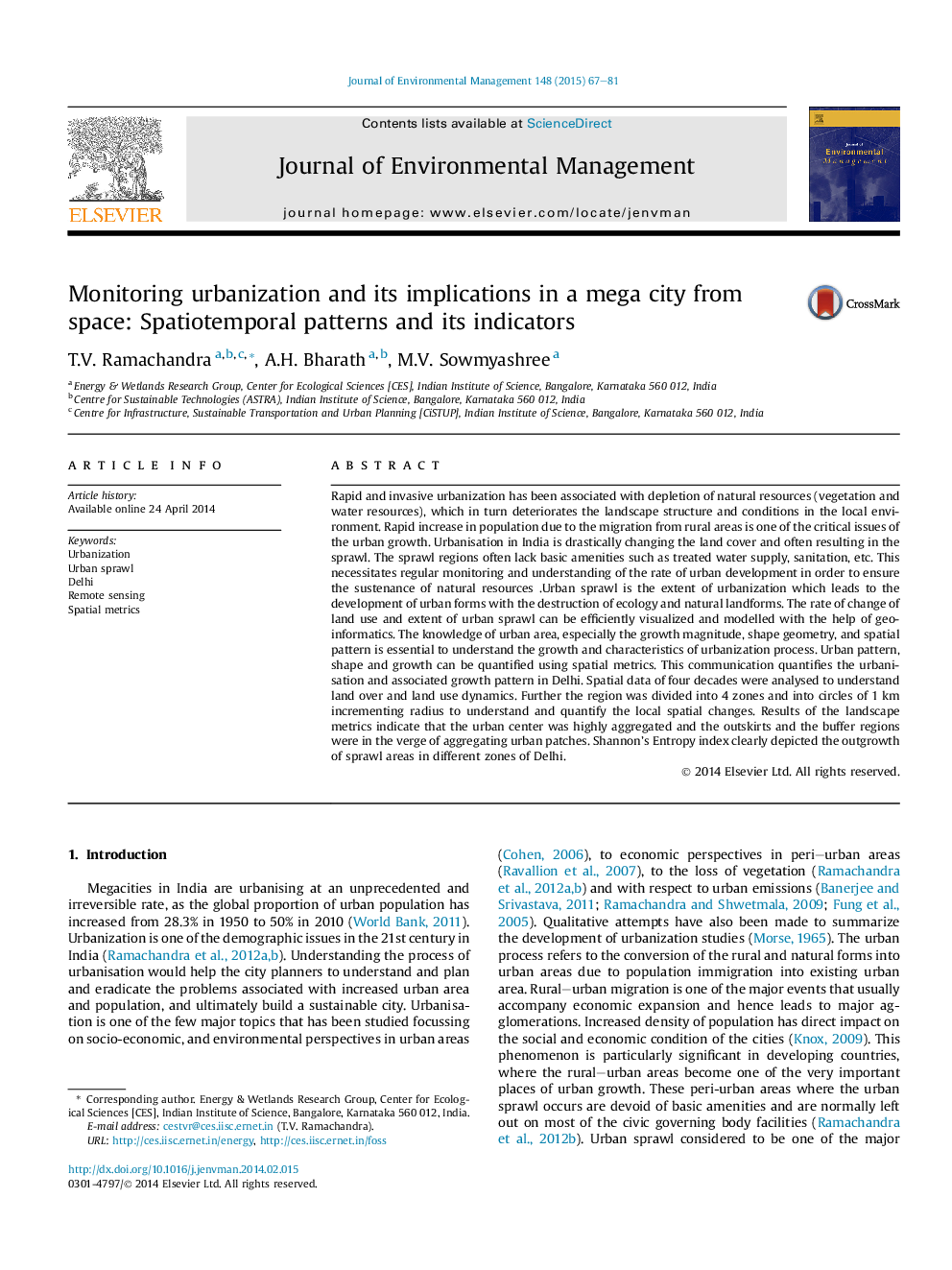| Article ID | Journal | Published Year | Pages | File Type |
|---|---|---|---|---|
| 1055689 | Journal of Environmental Management | 2015 | 15 Pages |
•Quantified land use dynamics using temporal remote sensing data with spatial metrics.•Delhi witnessed 835% growth in built-up during the last 4 decades.•Shannon entropy revealed the sprawl at periphery.•Density gradient reveals radial pattern of urban growth.•Spatial metrics aided in understanding urbanisation pattern and processes.
Rapid and invasive urbanization has been associated with depletion of natural resources (vegetation and water resources), which in turn deteriorates the landscape structure and conditions in the local environment. Rapid increase in population due to the migration from rural areas is one of the critical issues of the urban growth. Urbanisation in India is drastically changing the land cover and often resulting in the sprawl. The sprawl regions often lack basic amenities such as treated water supply, sanitation, etc. This necessitates regular monitoring and understanding of the rate of urban development in order to ensure the sustenance of natural resources .Urban sprawl is the extent of urbanization which leads to the development of urban forms with the destruction of ecology and natural landforms. The rate of change of land use and extent of urban sprawl can be efficiently visualized and modelled with the help of geoinformatics. The knowledge of urban area, especially the growth magnitude, shape geometry, and spatial pattern is essential to understand the growth and characteristics of urbanization process. Urban pattern, shape and growth can be quantified using spatial metrics. This communication quantifies the urbanisation and associated growth pattern in Delhi. Spatial data of four decades were analysed to understand land over and land use dynamics. Further the region was divided into 4 zones and into circles of 1 km incrementing radius to understand and quantify the local spatial changes. Results of the landscape metrics indicate that the urban center was highly aggregated and the outskirts and the buffer regions were in the verge of aggregating urban patches. Shannon's Entropy index clearly depicted the outgrowth of sprawl areas in different zones of Delhi.
Graphical abstractFigure optionsDownload full-size imageDownload as PowerPoint slide
